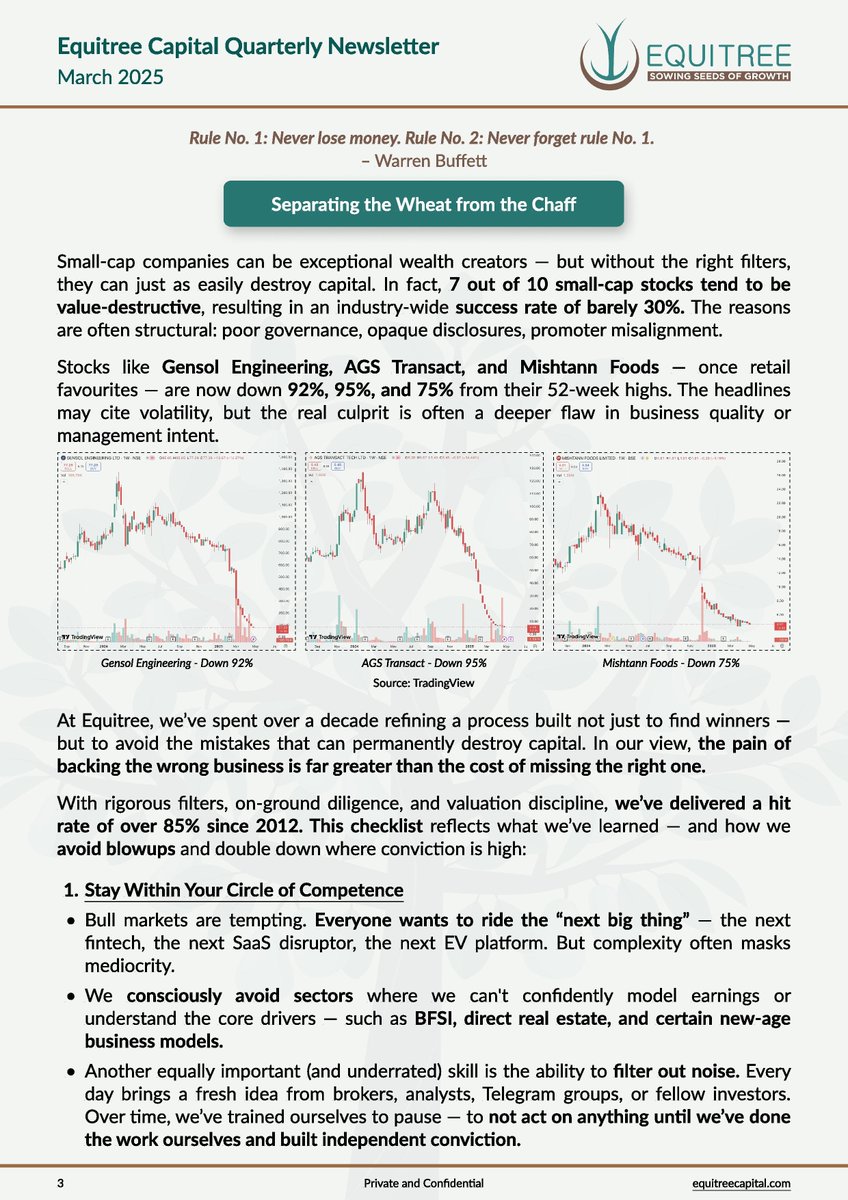7 selling rules the professional traders don't want you to know:
A thread with examples 🔖
A thread with examples 🔖
(1) Stocks hitting new highs with low trading volumes suggests that major (institutional) investors are no longer interested, so it's wise to lock gains and leave if trouble shows up. 

(2) If a stock climbs 70-100% above its 200-day moving average, it might be overextended.
Selling at this point could be wise, as the stock may be due for a correction.
Selling at this point could be wise, as the stock may be due for a correction.

(3) When a stock sees a sharp decline with a big red candle and heavy selling, sell half your position.
Place your stop loss below the low of that candle.
If the closing price breaks that low, consider selling the remaining shares.
Place your stop loss below the low of that candle.
If the closing price breaks that low, consider selling the remaining shares.

(4) When a stock closes near its day’s low multiple times, it signals that the stock has likely peaked so it's smart to take some profits and leave if things start looking risky. 

(5) When the stock price falls and stays below the 20-day EMA, that's the perfect moment to sell your stocks.
This strategy has been successfully employed by greatest traders for many decades.


This strategy has been successfully employed by greatest traders for many decades.


(6) When the stock price goes up a lot and then shows three consecutive candles going down, it means big investors are selling, and it's a good time to sell your shares. 

(7) When a stock's price rises significantly and later breaks below the trendline that held strong in the bull run, that's a clear sign to sell according to technical analysis. 

Thread #113 - That's a wrap!
If you found this useful:
(1) Follow me @rohaninvestor for more such threads. I write a new thread every week simplifying trading/investing concepts.
(2) Bookmark this thread for future.
If you found this useful:
(1) Follow me @rohaninvestor for more such threads. I write a new thread every week simplifying trading/investing concepts.
(2) Bookmark this thread for future.
• • •
Missing some Tweet in this thread? You can try to
force a refresh









